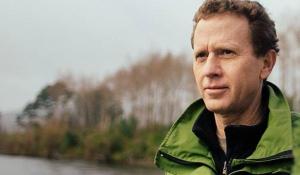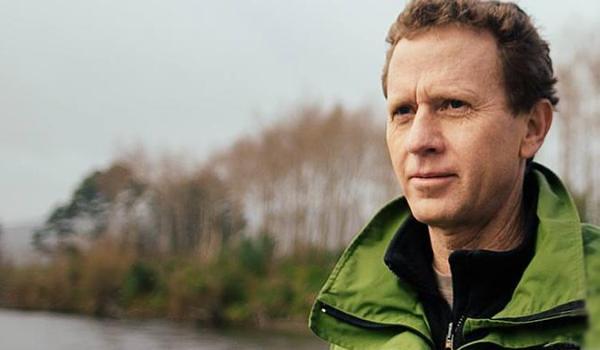Co-leader Russel Norman has today announced the final part of the Green Party rivers policy, at a dairy farm in Raglan.
Media release: Green Party: Norman – Smart Farming for Clean Rivers Sunday, 7 September 2014, 2:04 pm
Smart Farming for Clean Rivers: Speech by Russel Norman

Tēnā koutou Tēnā koutou Tēnā koutou katoa.
Thanks very much first of all to Mike and Madeline Moss for hosting us here in the beautiful Waitetuna Valley. Mike and Madeline farm 130 milking cows, as well as some sheep and beef.
They are passionate about soil and water quality, and as you will see later, they have created some amazing riparian strips, which have been keeping the streams that run through the farm clean for the past 10 years.
They now have an incredible 14 kms of fenced and planted waterways, and nine hectares of protected wetlands.
This is a smart farm in action, and proof of how financially, environmentally and socially rewarding a sustainable farming system can be.
I for one am looking forward to the grand tour.
Thanks also to Fred Lichtwark, who for the last 20 years has managed Whaingaroa Harbour Care, which has restored the Raglan Harbour catchment by planting no less than 1.5 million native trees along the streams and harbour edges.
Again, smart land management in action.
Both Mike and Fred will say a few words later, but first I’d like to talk you through why the Green Party is here today and how we plan to support more Kiwi farms to thrive like this one.
Three years ago the Green Party did something unusual.
We made rivers an election priority.
It wasn’t education, tax or law and order. But it was just as important.
Because our rivers are our lifeblood – culturally, spiritually, economically.
Our waterways are part of who we are.
New Zealand families should be able to head down to their local swimming hole or beach and jump in without worrying about getting sick.
Unfortunately, back in 2011, this was no longer possible in many places around New Zealand.
Our rivers had reached crisis point and New Zealanders wanted action. So we put a line in the sand.
Three years on, they remain at crisis point and New Zealanders are still waiting.
Nearly two-thirds of our monitored recreational river sites are now too polluted for swimming[i], one-third of our lakes are unhealthy[ii] and three quarters of our native freshwater fish are threatened or at risk of extinction.[iii]
Successive governments have sanctioned this deterioration.
And the National Government’s recently announced water rules will do nothing to stop it, in fact they will accelerate it.
So the Greens are again making rivers an election priority – not because we like repeating ourselves, but because the problem is worse, and we’re more determined than ever to fix it.
In July, we launched the key components of our plan for clean rivers.[iv]
The plan includes a protected rivers network for our most precious rivers; similar to the protection we afford our national parks.
It also involves new standards and rules for water quality that will ensure our rivers and lakes are clean enough to swim in, rather than National’s window-dressing rules that mean you can safely dip your toe in but do little else.
Federated Farmers and the National Party aside, the plan was well received.
It seems most people agree with the concept of swimmable rivers.
Today, we’re going to build on that plan, with further proposals to ensure our rivers are clean and safe.
Historically, the main source of river pollution in New Zealand was end-of-pipe point source pollution from industry and council wastewater systems.
But today, the main problem is diffuse pollution associated with intensified land use. In some catchments there are too many animals and too much fertiliser on our land, in others the land use management is poor, and in others the lack of riparian fencing and setbacks is a big problem. [v]
We’re not saying farmers are to blame.
Most farmers care deeply about the environment and work hard to farm within the rules.
The issue is that those rules are too weak, and the National Government has pushed farmers into an ever-increasing intensification model that can no longer be sustained.
It’s time to stop the tug of war between our farming sector and our environment.
We don’t have an agricultural industry despite our environment; we have it because of our environment.
Unless we have policies that ensure the two can go hand in hand, the sector is little more than a ticking time bomb.
Which is why we’re today announcing a plan to address two key pressure points.
The first element of our Smart Farming for Clean Rivers policy is a National Environment Standard for Fencing of Livestock and Riparian Strips.
By 1 July 2017, we’ll require that for intensive agriculture, all livestock must be fenced out of all waterways, lakes, and permanent wetlands.
Intensive agricultural operations will be required to erect permanent fences around their waterways by that date.
Non-intensive cattle operations must also exclude stock by 1 July 2017 but this can be done with temporary fencing in the first instance, with a deadline for permanent fencing to be determined by an expert panel in consultation with industry.
This expert panel will also determine the fencing requirements and deadlines for other types of non-intensive livestock farming.
Very importantly, in addition to fencing, riparian strips will be required, meaning the fences must be set back from waterways, leaving a buffer zone of vegetation.
Farmers will be able to get carbon credits for the CO2 sequestered by planting on their riparian strip and we’ll give them an incentive to get started with a $100m fund over three years.
Now I know what you’re thinking, didn’t National just announce something like this?
No. What John Key announced last week in relation to stream fencing was an election year band-aid unsuited to the gaping wound that is New Zealand’s polluted waterways.
National is proposing to require that dairy cows be fenced out of streams, this is something which Fonterra has already agreed to do!
But this doesn’t require that the fences are set back from streams to provide a good buffer zone of vegetation that filters out the sediment, phosphate and faeces that flow over the surface of the land in a rainfall event.
Nor does it deal with the nitrogen flowing through the groundwater, something that is only possible to deal with by introducing constraints on land use intensification in overloaded catchments and by requiring proper vegetation buffers around streams.
Nor does it require that the fences be permanent.
Nor does it deal with livestock other than dairy cows.
But perhaps most importantly National is incentivising intensification of land use thorough the $400m irrigation subsidy and by failing to introduce rules that require rivers and lakes to be clean.
National is actually is fuelling the problem of water pollution and then spending hundreds of millions of dollars of taxpayers’money trying to fix it.
Land use intensification will be controlled under the water rules we announced in July.
Also in our smart farming plan that we’re announcing today, is a charge on water used for irrigation, with every dollar generated going back into cleaning up our waterways.
The OECD, New Zealand Treasury and the Ministry for the Environment all recommend charging for irrigation water in order to driver efficiencies yet National has refused to do it.
According to Lincoln University’s Public Perceptions of New Zealand’s Environment 2010 study, New Zealanders, including farmers, are also strongly supportive of commercial users being charged for the water they use.
That’s because freshwaters is a common good, and the use of it for private profit should result in a direct benefit to both the environment and wider community.
The charge will be determined with stakeholder consultation, and as I said, all revenue generated will be spent on cleaning up polluted waterways.
The thing about irrigation is this. It is a ticket to intensive dairying. It means more animals and fertiliser on our land – and the science is absolutely clear that this leads to increased water pollution.
You fuel irrigation, you fuel intensification. It’s as simple as that.
Rather than acknowledging the link and acting accordingly, National is subsidising irrigation to the tune of 400 million dollars.
So John Key is effectively funding a problem only to then pat himself on the back for pulling out a plaster.
We need to focus on preventing the environmental damage from happening in the first place.
The Green Party’s plan is good for the environment and good for farmers.
Fencing livestock out of rivers and planting riverbanks has numerous economic benefits for farming: less stock loss in wet areas, lower vet bills, reduced costs for digging drains, weed control in riparian areas and fertiliser costs, increased land values, and better pasture quality.
And clean waterways, which our irrigation charge will help achieve, will inevitably benefit everybody.
One of the perks of working to clean up our rivers is that that I get to legitimately spend precious election campaign hours in and around New Zealand’s waterways.
A couple of weeks ago I rafted the Mohaka to highlight risks to the river from the potential sale of Lochinver Station on one of its tributaries.
And on Wednesday I followed the Waihou River from its pristine headwaters up at Blue Spring – where most of our bottled water comes from – down to Te Aroha, and then on to the Firth of Thames.
The journey was to show the contrast between water quality as it should be – up at the Spring – and water quality further down river, where you wouldn’t dare swim and where there are high and rising levels of nitrate and phosphorous.
A picture says a thousand words, so I’ve brought some props today.
I filled this one up at Blue Spring, taking a swig as I did so.
And this one downstream at Turua, close to the Firth of Thames. I hardly wanted to touch that water, let alone drink it.
What has happened to make these two bottles of water look so different?
Land intensification.
In the Waihou/Piako catchment, 42,000 hectares of land was intensified between 2002 and 2008. The Waihou now receives over 1,500 tonnes of nitrogen per year and about 150 tonnes of phosphorous.
If you had to name the colour in this bottle, as you would a paint shade, I’ll call it Enough is Enough.
It’s time for the Green Party’s plan for clean waterways.
It’s time for New Zealand to truly live up to and safeguard our clean green brand and to set in place the policies that mean we can farm prosperously long into the future.
With the Green Party’s protected rivers network, new standards and rules around water quality, fencing and planting proposals and with the money generated from an irrigation charge, we will ensure our rivers are clean enough to swim in.
We will ensure a cleaner, smarter New Zealand.
Thank you.
[1] Ministry for the Environment (2013) Suitability for Swimming: Indicator update
https://www.mfe.govt.nz/environmental-reporting/fresh-water/suitability-for-swimmingindicator/suitability-swimming-indicator.html; calculated from the data here:
https://www.mfe.govt.nz/environmental-reporting/fresh-water/suitability-for-swimmingindicator/suitability-swimming-monitored-sites-data.xls taking only river sites and
excluding sites with no data
[1] http://www.mfe.govt.nz/publications/ser/lake-water-quality-in-nz-2010/lake-water-quality-in-nz-2010.pdf, p iv
[1] http://www.doc.govt.nz/Documents/science-and-technical/nztcs7entire.pdf, p 3
[1] https://www.greens.org.nz/sites/default/files/env-rivers-20140711-2_0.pdf
[1] http://www.niwa.co.nz/publications/wa/water-atmosphere-1-july-2010/how-clean-are-our-rivers

